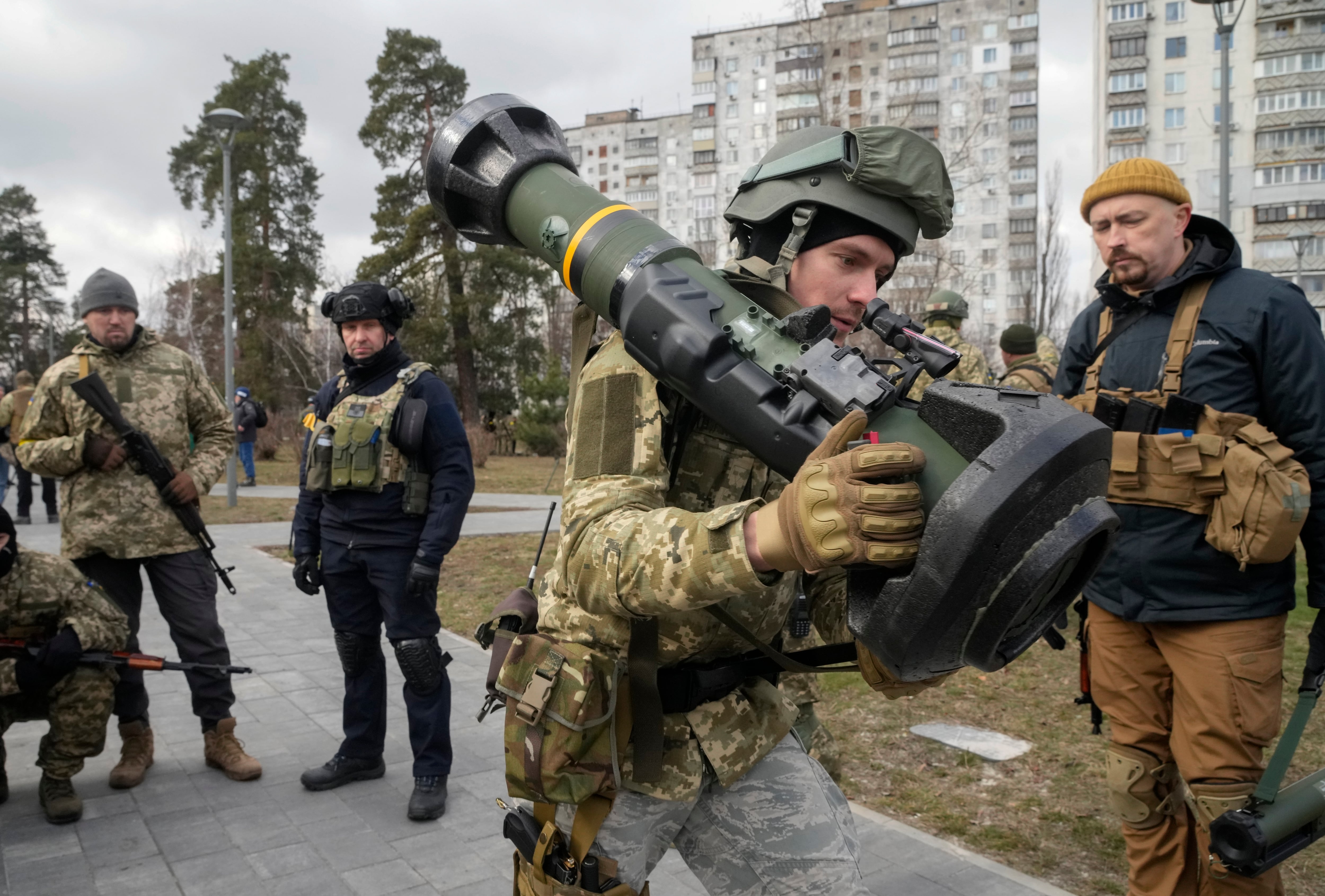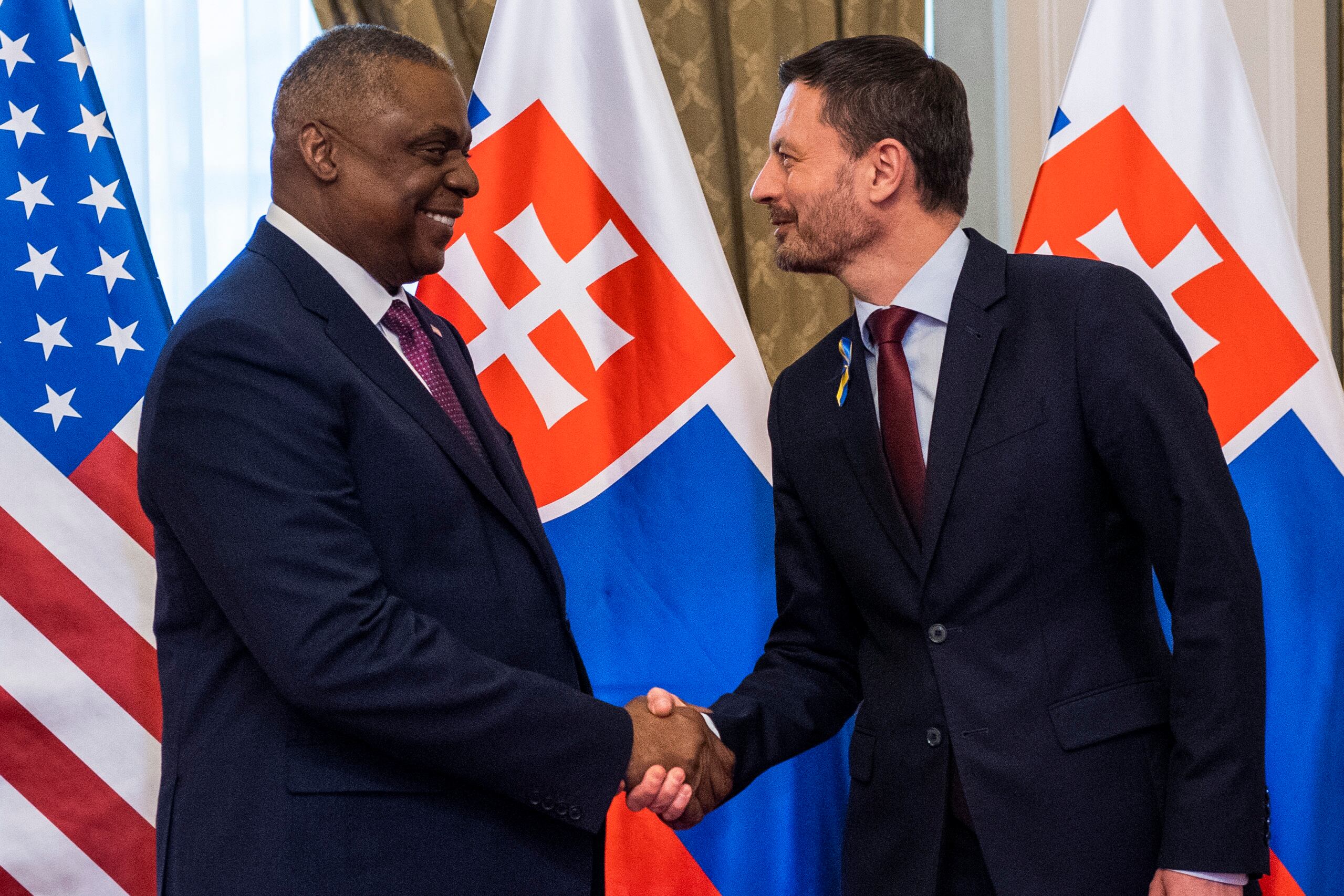WASHINGTON ― A top Pentagon official told lawmakers Wednesday the Biden administration is working to accommodate NATO ally Slovakia’s offer to send more S-300 surface-to-air missile systems to Ukraine, following Russia’s invasion.
Slovakia has agreed to provide Ukraine with the Soviet-era system to help defend against Russian airstrikes, and Assistant Secretary of Defense for International Security Affairs Celeste Wallander said at a House Armed Services Committee hearing the U.S. is working out Slovakia’s request for some kind of backfill.
But two weeks after Slovakia’s defense minister, Jaroslav Nad, made an impromptu offer to send the S-300 if Western allies provide a “proper replacement,” Rep. Mike Rogers, R-Ala., asked why the deal is not done. Wallander said the effort’s “ongoing,” with coordination afoot with a range of countries, and she asked to provide a fuller answer in the classified session to follow.
“We are working with Slovakia to identify the requirements for meeting their needs,” she said. “We are working on this, and meanwhile we have focused on getting countries that hold Soviet legacy systems, including S-300 systems ― that have spare parts, missiles, different parts of that S-300 ― who are willing to send that to Ukraine.”
The comments came weeks after Ukrainian President Vlodymyr Zelenskyy, with his nation under attack by Russian aircraft and missiles, asked the U.S. Congress to create a no-fly zone over Ukraine or alternatively to supply S-300 and other air defense systems and warplanes.
Germany, whose defense minister visited U.S. Defense Secretary Lloyd Austin at the Pentagon Wednesday, has committed to sending Patriot air-defense capabilities to Slovakia, which borders Ukraine in the east. Nad has said the Patriot, part of a new NATO battlegroup, would complement the S-300 and not replace it.
In a separate exchange, Wallander affirmed 100 Switchblade drones are part of a U.S. package being delivered to Ukraine. It’s been previously reported the drones, made by AeroVironment, are part of a $800 million aid tranche in the process of being sent this month, with a range of anti-armor weapons, firearms, body armor and ammunition. (Ukrainian forces already use Turkish Bayraktar TB2 armed drones.)
Asked if 100 of the Switchblades would be enough to destroy the Russian invading force’s logistics convoys, or if more would be needed, the commander of U.S. and NATO forces in Europe, Gen. Tod Wolters, said, “‘I’m convinced that when we get them first set of Switchblades, there’ll be an immediate request from the Ukrainians for more.”
RELATED

At a separate event on Wednesday, HASC’s chairman, Rep. Adam Smith, D-Wash., said he favors arming Ukraine with more drones as quickly as possible in order to take out the Russian artillery raining destruction on Ukrainian cities. He credited Ukrainian attacks on Russian supply convoys for thwarting Russia’s efforts to take Kyiv.
“Drones have the ability to get out there and not be seen. They’re survivable, they won’t get shot down and they can deliver a punch. So those are the systems that we have to get to them,” Smith said.
At the hearing, lawmakers asked about sending coastal defense cruise missiles to Ukraine or executing Poland’s offer to send its Soviet-era MiG-29s, as well as the U.S. defense industrial base boosting production of the Javelin anti-tank missiles and Stinger anti-tank missiles the U.S. and allies are sending to Ukraine from their own stocks.
Wallander said the Pentagon’s acquisition and sustainment office is studying industrial capacity as well as what new authorities and funding the Pentagon might need. Separately, she said her office leads the response to Ukraine’s requests for military aid, in cooperation with the Defense Security Cooperation Agency, Joint Staff and diplomatic community.
Washington recently approved a $13.6 billion package to address the Russia-Ukraine crisis, much of it to cover the costs of sending troops and weapons to Eastern Europe. The Biden administration has sent Ukraine a total of $2 billion in security assistance, including direct transfers of U.S. equipment.
A bipartisan group of senators on Tuesday requested specifics from the Biden administration on the defense aid the U.S. has provided to Ukraine since Russia’s invasion. The letter, led by Sens. Joni Ernst, R-Iowa, and Kirsten Gillibrand, D-N.Y., asked White House national security adviser Jake Sullivan for a list of lethal and nonlethal aid provided to date and the status of deliveries.
Russia has warned against any shipments of advanced air defenses to Ukraine and threatened it may target Western arms supplies.
Smith asked Wolters if the U.S. needs to balance the risk of Russia spreading the war outside of Ukraine in response to stepped up aid from the U.S. and its western allies.
“My first answer is: constantly,” Wolters said. “The conditions change second by second, day by day, week by week.”
Joe Gould was the senior Pentagon reporter for Defense News, covering the intersection of national security policy, politics and the defense industry. He had previously served as Congress reporter.





